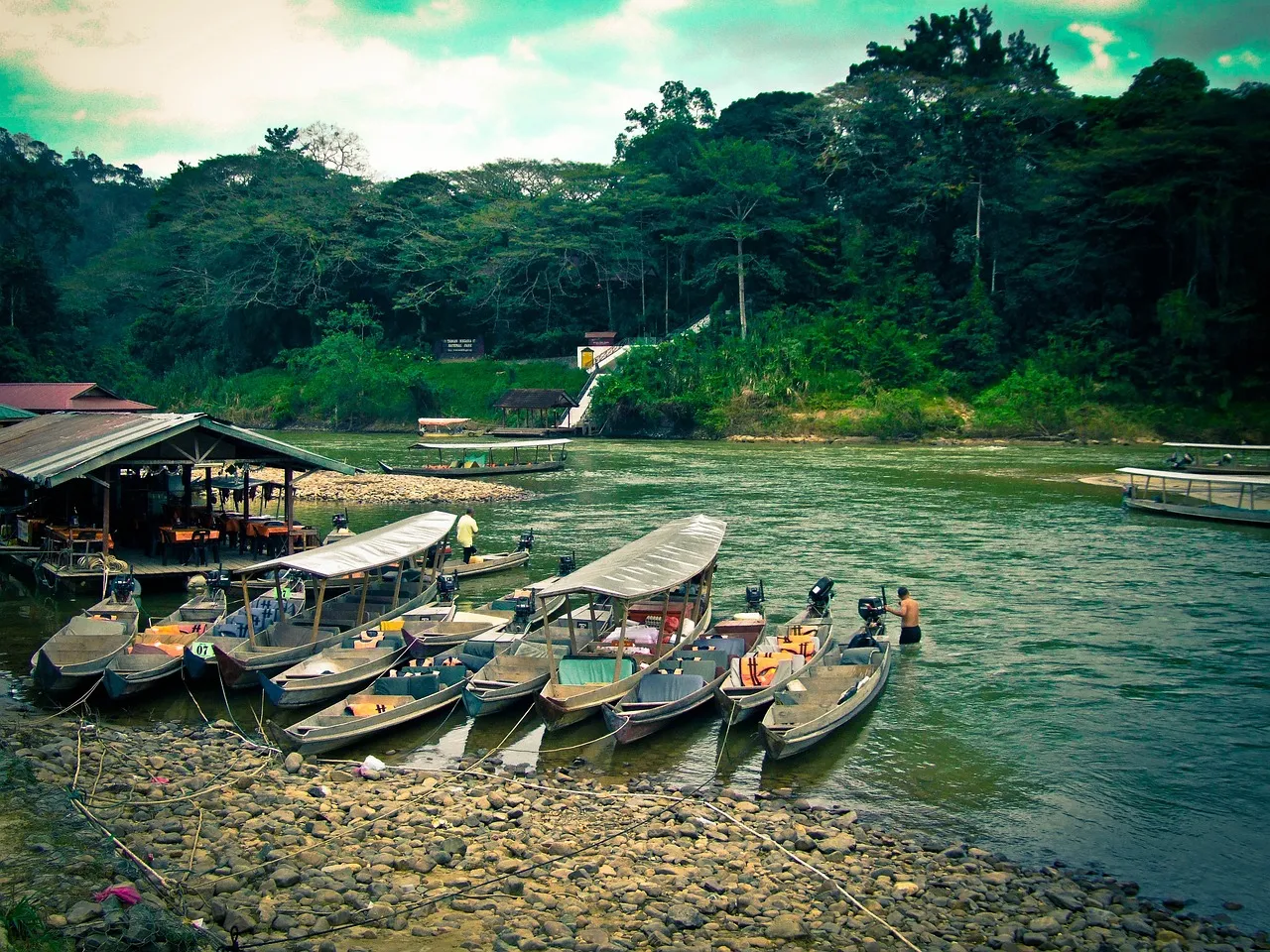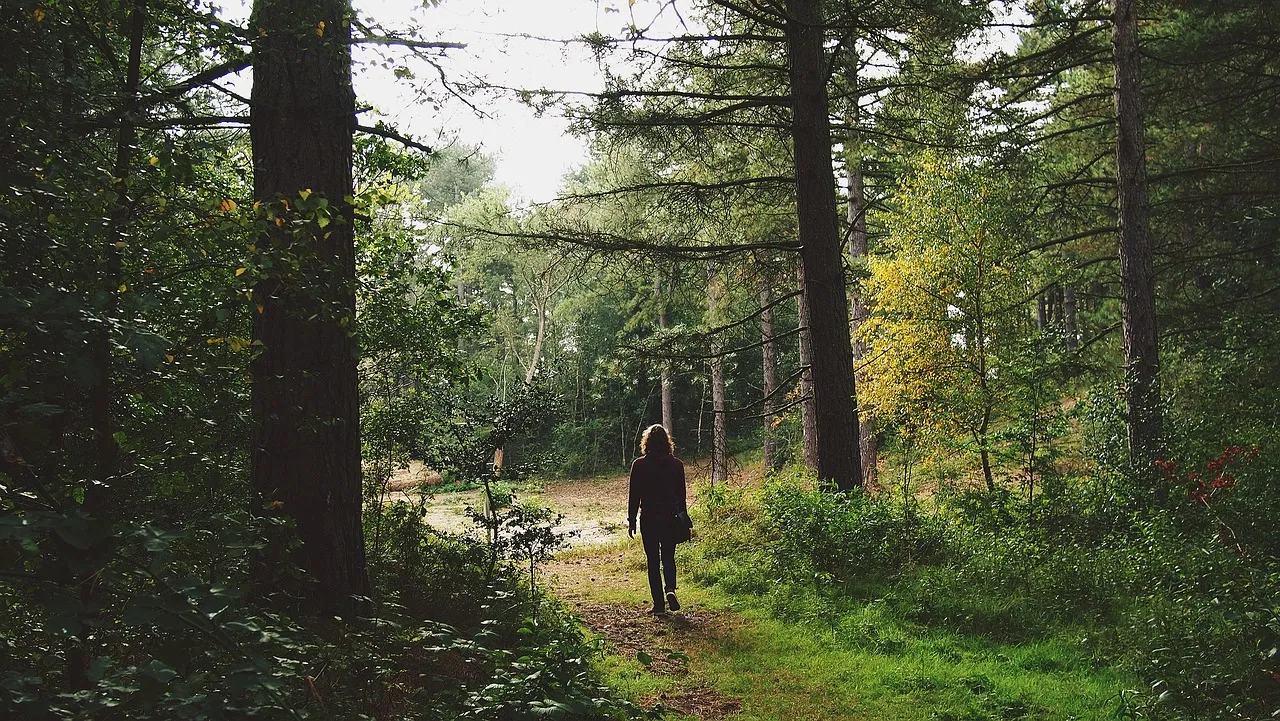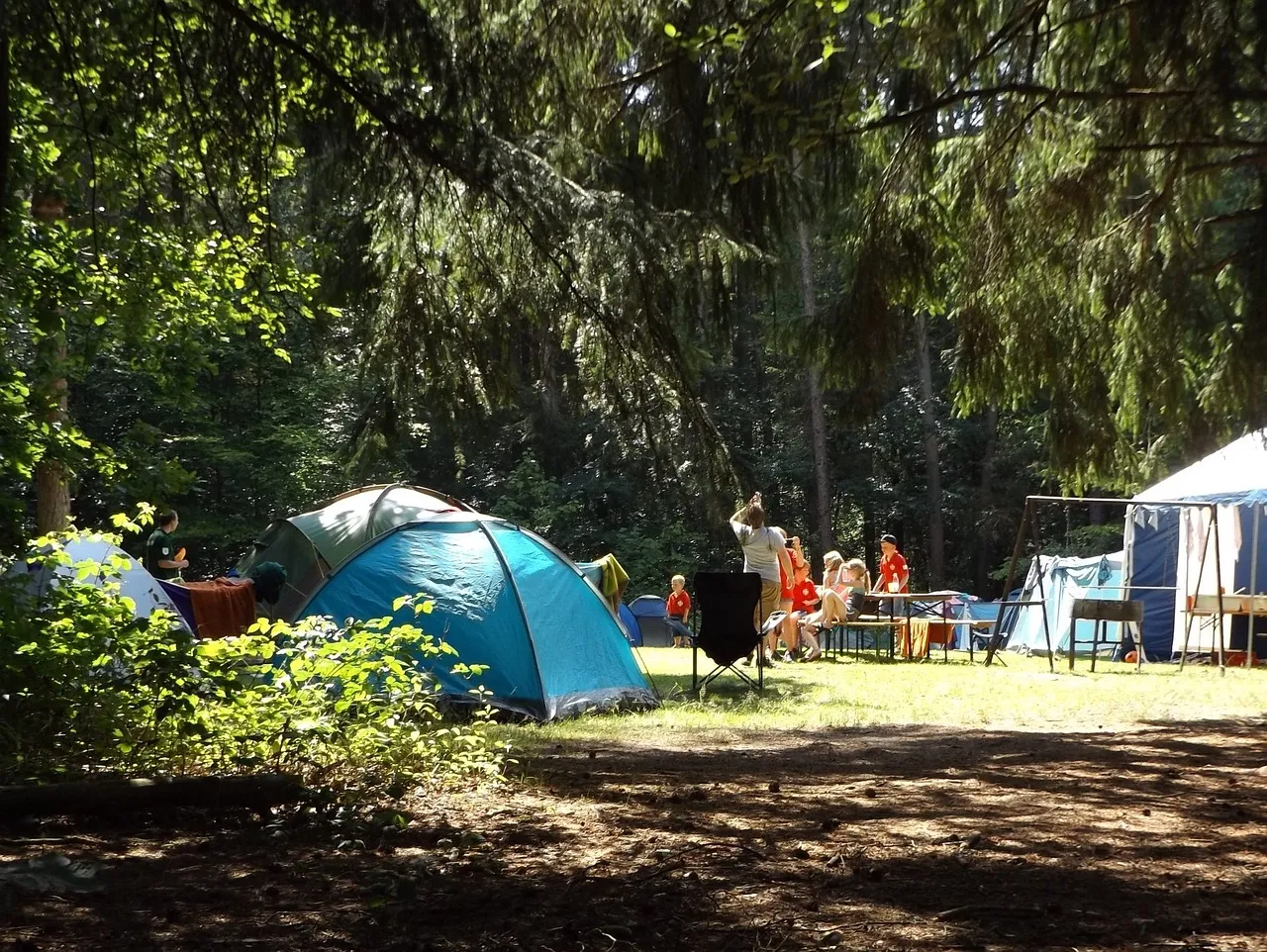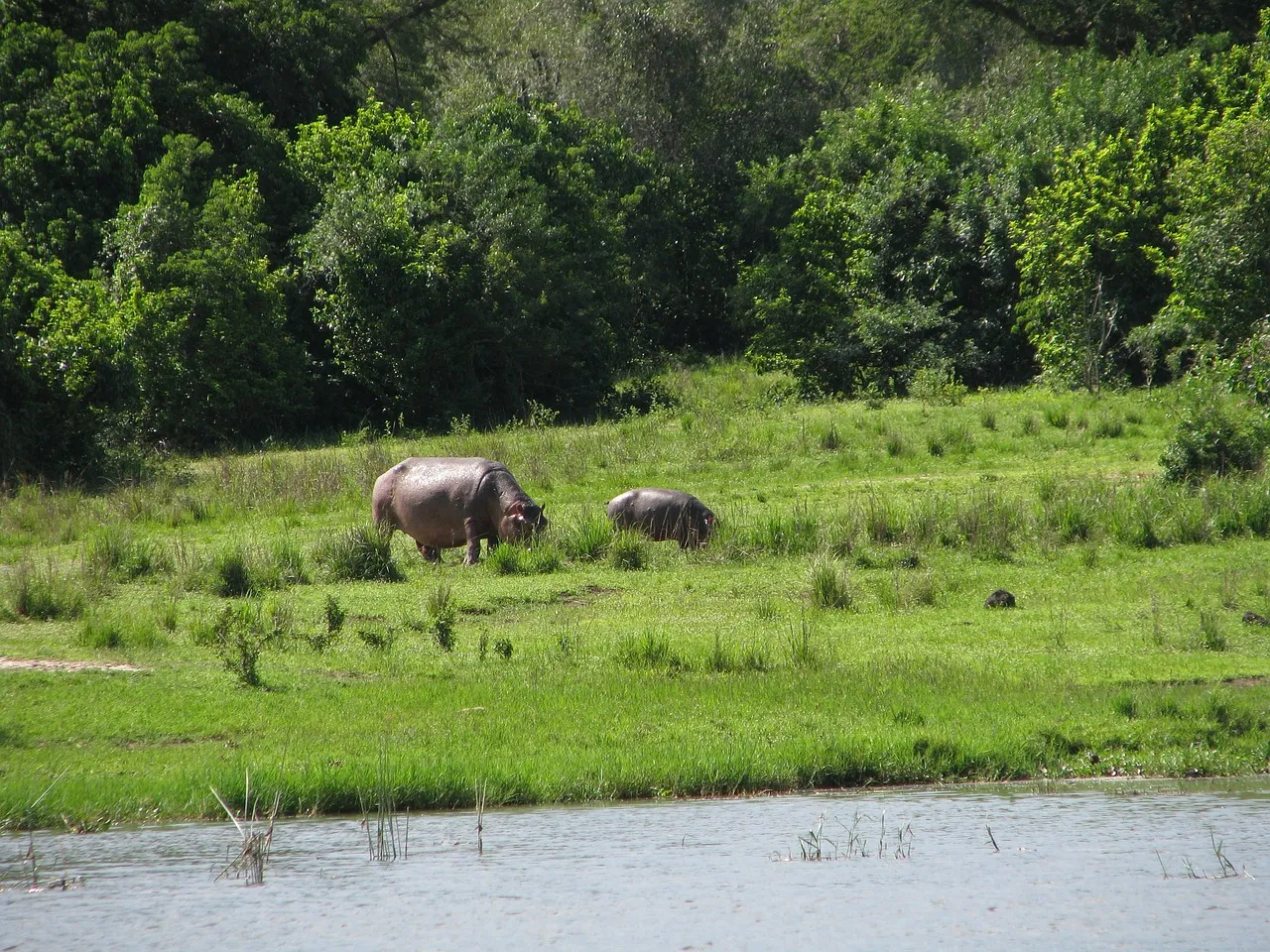Embarking on a rainforest expedition is like stepping into a living, breathing symphony of nature, where every rustle of leaves and chorus of birds tells a story of biodiversity and ecological wonders. In this blog post, we’ll delve into the captivating realm of rainforest expeditions, exploring the enchanting landscapes, diverse ecosystems, and the unique flora and fauna that make these journeys unforgettable.
Enchanting Rainforest Expeditions
1. The Call of the Canopy
Rainforests are renowned for their towering canopies, creating a world within a world. As you embark on an expedition, the first enchanting encounter is with the canopy itself. Whether traversing treetop walkways or zip-lining through the lush greenery, the canopy offers a mesmerizing perspective, revealing a kaleidoscope of life that thrives above the forest floor. Look out for elusive birds, primates, and vibrant orchids that call the canopy home.
2. Biodiversity Extravaganza
One of the most enchanting aspects of rainforest expeditions is the incredible biodiversity that unfolds at every turn. Rainforests are hotspots of life, hosting a myriad of species from insects to mammals, and from amphibians to reptiles. Explore the forest trails with expert guides who unveil the hidden gems of biodiversity – from brilliantly colored poison dart frogs to camouflaged leaf-tailed geckos. Every step becomes a chance encounter with the wonders of evolution.
3. Symphony of Sounds
Close your eyes, and let the rainforest serenade you with its symphony of sounds. The buzzing of insects, the rhythmic drumming of raindrops, and the calls of exotic birds create an immersive auditory experience. During night expeditions, the rainforest truly comes alive with the haunting calls of nocturnal creatures. Immerse yourself in the enchanting cacophony, a testament to the vitality and interconnectedness of this ecosystem.
4. Ethereal Waterways
Rainforests are often crisscrossed by meandering rivers and crystal-clear streams, adding a touch of magic to your expedition. Take a gentle boat ride along these ethereal waterways, surrounded by lush vegetation and the occasional sighting of aquatic wildlife. Some rainforests offer the unique experience of kayaking through mangrove forests or paddling to hidden lagoons, providing a tranquil escape into the heart of nature.
5. Wildlife Encounters
No rainforest expedition is complete without the thrill of wildlife encounters. From the elusive jaguars of the Amazon to the playful orangutans of Borneo, rainforests are home to some of the planet’s most iconic and endangered species. Expert guides lead you through well-traveled paths and secret hideaways, increasing your chances of encountering fascinating creatures in their natural habitats.
6. Medicinal Marvels
Rainforests are not just havens for wildlife; they are also treasure troves of medicinal plants and traditional remedies. Many indigenous communities have relied on the rainforest’s pharmacy for generations. Guided expeditions often include insights into the traditional uses of plants, unveiling the secrets behind natural remedies that have the potential to transform modern medicine.
7. Cultural Immersion
Rainforest expeditions offer more than just natural wonders; they provide opportunities for cultural immersion with indigenous communities that have lived in harmony with these ecosystems for centuries. Engage in cultural exchanges, learning about traditional practices, rituals, and the symbiotic relationship between these communities and the rainforest. It’s a chance to appreciate the wisdom passed down through generations.
8. Treetop Accommodations
For an enchanting twist to your rainforest expedition, consider staying in treetop accommodations. Suspended high above the forest floor, these eco-friendly lodges provide a unique and immersive experience. Fall asleep to the soothing sounds of the rainforest and wake up to the sunrise painting the canopy in hues of gold – an experience that blends luxury with the untamed beauty of nature.
9. Conservation in Action
Many rainforest expeditions align with conservation initiatives, allowing travelers to actively contribute to the protection of these vital ecosystems. Participate in tree-planting programs, wildlife monitoring projects, or engage with local conservationists to understand the challenges and successes of preserving rainforests for future generations.
10. Responsible Tourism Practices
To ensure the enchantment of rainforests endures, it’s essential to embrace responsible tourism practices. Choose eco-friendly operators, follow Leave No Trace principles, and support initiatives that prioritize conservation and sustainable development. By treading lightly, you contribute to the longevity of these magical landscapes.
Rainforest expeditions are invitations to explore the enchanting realms of our planet, where biodiversity, culture, and conservation converge in a harmonious dance. As you embark on these journeys, let the allure of the rainforest captivate your senses, leaving you with indelible memories and a deep appreciation for the delicate balance that sustains these extraordinary ecosystems.
Rainforest biodiversity facts
Rainforests, often referred to as the lungs of the Earth, harbor an astonishing diversity of life within their lush canopies and verdant floors. In this blog post, we’ll embark on a journey to unravel the captivating world of rainforest biodiversity, exploring facts that showcase the incredible variety of species and the vital role these ecosystems play in maintaining the planet’s ecological balance.
1. Biodiversity Hotspots
Rainforests are biodiversity hotspots, hosting an extraordinary concentration of plant and animal species. Despite covering only about 6% of the Earth’s land surface, rainforests are home to more than half of the world’s plant and animal species. This makes them essential reservoirs of genetic diversity crucial for the survival of various ecosystems.
2. Overwhelming Floral Diversity
The plant life in rainforests is nothing short of astounding. A single hectare of rainforest can contain hundreds of different tree species, each adapted to specific niches within the ecosystem. The intricate interplay of diverse plant life contributes to the formation of complex, multi-layered canopies that support myriad species of insects, birds, and mammals.
3. Endless Array of Insects
Rainforests are insect havens, with estimates suggesting that up to 90% of the world’s insect species reside within these ecosystems. From dazzling butterflies to camouflaged stick insects, the sheer variety of insect life is a testament to the intricate web of relationships that sustains the rainforest’s biodiversity.
4. Avian Wonderland
The avian diversity in rainforests is a birdwatcher’s paradise. Tropical rainforests are home to an estimated 2,000 bird species, representing a staggering 20% of the world’s total. From vibrant parrots and toucans to elusive birds of paradise, the avian residents contribute to the symphony of sounds that echoes through the dense vegetation.
5. Arboreal Marvels
Rainforests are synonymous with tree-dwelling species, and the term ‘arboreal’ takes on a whole new meaning in these ecosystems. From primates like spider monkeys and orangutans to a variety of tree frogs and snakes, the ability to navigate the vertical landscape is a key adaptation for survival in the rainforest.
6. Mammalian Diversity
While big cats like jaguars and elusive species like the ocelot may capture the spotlight, rainforests are also home to an array of smaller mammals, including various species of monkeys, anteaters, and rodents. The diversity of mammals highlights the interconnected roles these creatures play in maintaining the ecological balance of the rainforest.
7. Amphibians and Reptiles
Rainforests are teeming with amphibians and reptiles, many of which display vibrant colors and unique adaptations. The poison dart frogs, with their striking hues, are a well-known example of the dazzling diversity within this group. Meanwhile, reptiles like chameleons and anacondas showcase the incredible adaptations that have evolved over millennia.
8. Below the Surface Aquatic Diversity
Rivers and streams meandering through rainforests harbor a rich aquatic diversity. From colorful fish to elusive amphibians like the glass frog, the waterways contribute significantly to the overall biodiversity of these ecosystems. Aquatic life in rainforests is not limited to the surface, as underwater caves and submerged logs provide unique habitats for various species.
9. Mutualistic Relationships
One of the fascinating aspects of rainforest biodiversity is the prevalence of mutualistic relationships. Orchids, for example, may rely on specific species of bees for pollination, while ants play a crucial role in protecting certain plants from herbivores. These intricate connections highlight the interdependence of species within the rainforest ecosystem.
10. Threats to Rainforest Biodiversity
Despite their ecological importance, rainforests face numerous threats, including deforestation, habitat fragmentation, and climate change. Human activities such as logging and agriculture contribute to the loss of biodiversity and disrupt the delicate balance that sustains these ecosystems. Conservation efforts and sustainable practices are essential to mitigate these threats and protect the incredible biodiversity of rainforests.
The rich tapestry of life woven within rainforests is a testament to the wonders of biodiversity. From the smallest insects to the majestic big cats, each species plays a crucial role in maintaining the health and resilience of these ecosystems. As we marvel at the sheer diversity of life within rainforests, it becomes imperative to recognize our responsibility in preserving these vital habitats for future generations and for the well-being of the planet as a whole.
Guided rainforest tours
Embarking on a journey through a rainforest is like stepping into a realm of unparalleled biodiversity and natural splendor. While the allure of these ecosystems is undeniable, guided rainforest tours offer an enriching experience, providing insights, safety, and a deeper connection to the wonders that inhabit these lush landscapes. In this blog post, we’ll explore the benefits and highlights of guided rainforest tours, unraveling the secrets of the forest with the assistance of knowledgeable guides.
1. Expert Guidance
Guided rainforest tours are led by experienced and knowledgeable guides who are well-versed in the intricacies of the ecosystems they navigate. These experts possess an intimate understanding of the flora and fauna, enabling them to share valuable insights, identify unique species, and explain the complex ecological relationships that sustain the rainforest. Their expertise adds a layer of depth to the journey, turning a simple stroll into an educational adventure.
2. Enhanced Wildlife Encounters
Spotting wildlife in a dense rainforest can be challenging, especially for untrained eyes. Guided tours, however, increase the likelihood of memorable wildlife encounters. Guides are adept at recognizing subtle movements, camouflaged creatures, and the calls of elusive birds. Whether it’s a troop of howler monkeys or a vibrant poison dart frog, the expertise of guides transforms the rainforest into a living, breathing spectacle.
3. Safety and Navigation
Rainforests can be intricate and challenging to navigate, with dense vegetation, uneven terrain, and hidden hazards. Guided tours prioritize safety, ensuring that participants navigate the terrain with confidence. Guides are familiar with the trails, river crossings, and potential risks, allowing visitors to immerse themselves in the experience without worrying about getting lost or encountering unexpected challenges.
4. Interpretation of Ecology
A guided rainforest tour is not just a walk through nature; it’s an opportunity to understand the intricate web of ecological interactions that define these ecosystems. Guides interpret the ecology of the rainforest, explaining the roles of different species, the importance of biodiversity, and the delicate balance that sustains life. This interpretive aspect enhances the tour, fostering a deeper appreciation for the interconnectedness of all living things.
5. Customized Experiences
Guided rainforest tours often offer a degree of customization to cater to the interests and preferences of participants. Whether you’re keen on birdwatching, studying plant life, or focusing on specific aspects of the rainforest ecology, guides can tailor the experience to align with your interests. This personalized touch ensures that each participant enjoys a unique and fulfilling exploration of the rainforest.
6. Educational Opportunities
Guided rainforest tours serve as outdoor classrooms, providing a wealth of educational opportunities. Guides share information on the medicinal properties of plants, the adaptations of various species, and the cultural significance of the rainforest to indigenous communities. These educational elements add depth to the experience, transforming the tour into a holistic journey of discovery.
7. Access to Hidden Gems
Rainforests conceal hidden gems that may elude unguided explorers. Guides, with their local knowledge, lead participants to secret waterfalls, secluded viewpoints, and off-the-beaten-path locations that showcase the lesser-known wonders of the rainforest. These hidden gems contribute to a sense of exclusivity, allowing participants to witness the beauty that is often overlooked.
8. Environmental Conservation Awareness
Guided rainforest tours often incorporate elements of environmental conservation awareness. Guides share information about the threats facing rainforests, the importance of sustainable practices, and the role individuals can play in preserving these vital ecosystems. This educational component fosters a sense of environmental responsibility and encourages participants to become advocates for rainforest conservation.
9. Night Tours
Many guided rainforest tours extend into the evening, offering night tours that unveil the mysteries of the nocturnal world. Guided by the expertise of night-savvy guides, participants have the chance to witness bioluminescent organisms, nocturnal mammals, and the enchanting symphony of night sounds. Night tours add a magical dimension to the rainforest experience.
10. Community Engagement
Guided rainforest tours often involve interactions with local communities residing near these natural wonders. Guides facilitate cultural exchanges, allowing participants to learn about traditional practices, folklore, and the symbiotic relationship between indigenous communities and the rainforest. This engagement fosters cultural awareness and promotes responsible tourism practices.
Guided rainforest tours are gateways to a world of discovery, education, and appreciation for the intricate wonders of nature. With expert guides leading the way, participants can delve into the heart of the rainforest, gaining a profound understanding of its ecological significance and cultural richness. These tours not only offer a unique adventure but also contribute to the conservation of these vital ecosystems, ensuring they remain treasures for generations to come.
How to experience a rainforest expedition
Embarking on a rainforest expedition is a transformative journey into one of Earth’s most biodiverse and enchanting ecosystems. While the prospect of navigating dense jungles and witnessing exotic wildlife is exhilarating, a successful rainforest expedition requires careful planning and a deep appreciation for the natural world. In this blog post, we’ll guide you through the essential steps on how to experience a rainforest expedition that is not only adventurous but also enriching.
1. Research Your Destination
Before embarking on a rainforest expedition, it’s crucial to research and choose your destination wisely. Rainforests are scattered across the globe, from the Amazon in South America to the Daintree in Australia and the Congo in Africa. Each rainforest has its unique flora, fauna, and climate. Consider factors such as accessibility, conservation efforts, and the specific biodiversity you wish to encounter.
2. Select the Right Time to Visit
Rainforests often experience distinct wet and dry seasons. The timing of your expedition can significantly impact your experience. While the wet season brings lush greenery and vibrant life, it also means heavier rainfall and more challenging trekking conditions. The dry season may offer better visibility but could result in a less vibrant landscape. Consider your preferences and the activities you wish to undertake when deciding on the timing of your expedition.
3. Choose a Reputable Tour Operator
Opting for a guided rainforest tour with a reputable operator is a wise decision for a safe and enriching experience. Look for operators with experienced guides, a commitment to sustainable practices, and a strong emphasis on environmental conservation. Reviews and testimonials from previous participants can provide insights into the quality of their services.
4. Pack Appropriately
Packing for a rainforest expedition requires careful consideration of the climate, terrain, and potential challenges you may encounter. Essential items include lightweight, moisture-wicking clothing, sturdy hiking boots, a good quality rain jacket, a hat, and sunscreen. Don’t forget insect repellent, a first aid kit, and any prescription medications you may need. A reliable camera or binoculars will enhance your ability to observe and capture the wonders of the rainforest.
5. Prepare Physically
Rainforest expeditions often involve trekking through challenging terrain, including uneven paths, muddy trails, and steep slopes. Prior to your journey, engage in physical activities that build strength and endurance. Regular walks, hikes, and cardiovascular exercises will prepare your body for the demands of the expedition, ensuring you can fully enjoy the experience without physical limitations.
6. Embrace Guided Tours
Enlisting the services of experienced guides enhances your rainforest expedition in numerous ways. Guides provide in-depth knowledge about the flora and fauna, navigate the challenging terrain, and enhance safety during the journey. Their expertise transforms the expedition into an educational adventure, offering insights into the ecological intricacies and cultural aspects of the rainforest.
7. Engage in Interpretive Activities
Make the most of interpretive activities offered during the expedition. Guided walks, wildlife tracking, and interactive sessions with knowledgeable guides allow you to gain a deeper understanding of the rainforest’s ecology. Learn about the medicinal properties of plants, the adaptations of wildlife, and the delicate balance that sustains life in this unique ecosystem.
8. Experience Night Excursions
Many rainforest species are nocturnal, and night excursions provide a unique opportunity to witness the wonders of the rainforest after dark. Guided night walks or boat trips may reveal bioluminescent organisms, nocturnal mammals, and the captivating symphony of night sounds. Embracing the darkness adds a magical dimension to your rainforest experience.
9. Practice Responsible Tourism
Responsible tourism is essential to ensure the long-term health and conservation of rainforests. Follow Leave No Trace principles, stay on designated trails, and avoid disturbing wildlife. Choose eco-friendly tour operators that prioritize sustainability and support local conservation efforts. By practicing responsible tourism, you contribute to the preservation of these vital ecosystems.
10. Immerse Yourself in the Sounds and Sights
Take moments to simply be present in the rainforest. Close your eyes, listen to the myriad sounds of birds, insects, and rustling leaves. Observe the intricate details of vibrant flowers, towering trees, and elusive wildlife. The true magic of a rainforest expedition lies in immersing yourself in its sights and sounds, creating memories that transcend the visual.
Experiencing a rainforest expedition is a journey of self-discovery, environmental appreciation, and awe-inspiring encounters with nature. By thoroughly researching your destination, choosing the right time to visit, selecting a reputable tour operator, and embracing guided tours, you ensure a fulfilling and educational adventure. Remember to pack appropriately, prepare physically, and practice responsible tourism to make the most of your rainforest expedition. As you delve into the heart of the rainforest, allow its wonders to captivate your senses and leave you with a profound appreciation for the beauty and complexity of our planet’s most remarkable ecosystems.
Unique flora and fauna in rainforests
Rainforests, often referred to as the lungs of the Earth, are renowned for their incredible biodiversity, housing a stunning array of plant and animal species. In this blog post, we embark on a journey to uncover the unique flora and fauna that make rainforests some of the most captivating and biologically rich ecosystems on the planet.
The Unique Flora of Rainforests
Vibrant Orchids and Exotic Flowers
Rainforests boast an unparalleled diversity of orchids, making up a significant portion of the world’s orchid species. These striking flowers, with their intricate shapes and vibrant colors, adorn the rainforest floor and canopy alike. Some orchids have evolved unique adaptations to attract specific pollinators, contributing to the intricate web of ecological relationships within the rainforest.
Giant Rafflesia – The Largest Flower
Contrary to the delicate beauty of orchids, the Rafflesia is a botanical marvel found in rainforests of Southeast Asia. This colossal flower holds the title of the world’s largest, with some species spanning over three feet in diameter. The Rafflesia is a true testament to the extraordinary adaptations that have evolved in the heart of the rainforest.
Bioluminescent Fungi
In the depths of rainforest nights, bioluminescent fungi illuminate the forest floor, creating an otherworldly glow. These fungi, such as the Mycena lux-coeli, emit a soft light, thought to attract insects that aid in their spore dispersal. The presence of these glowing organisms adds a touch of magic to the nocturnal ambiance of the rainforest.
Carnivorous Plants
Adapted to nutrient-poor soils, some rainforest plants have evolved into carnivores to supplement their diet. The Venus flytrap, pitcher plants, and sundews lure, capture, and digest insects to obtain essential nutrients. These fascinating adaptations showcase the ingenuity of rainforest flora in overcoming the challenges of their environment.
The Unique Fauna of Rainforests
Resplendent Birds of Paradise
The rainforests of Papua New Guinea and nearby regions are home to the spectacular Birds of Paradise. These avian wonders exhibit a stunning array of colors and elaborate plumage, performing intricate courtship dances to attract mates. The vibrant displays of Birds of Paradise contribute to the rainforest’s reputation as a living kaleidoscope of beauty.
Enigmatic Jaguars
The rainforests of the Americas, particularly the Amazon, shelter elusive big cats like the jaguar. Renowned for their strength and agility, jaguars are skilled hunters, navigating the dense vegetation with stealth. Spotting one of these majestic felines during a rainforest expedition is a rare and awe-inspiring experience.
Colorful Poison Dart Frogs
Among the vibrant inhabitants of rainforests, poison dart frogs stand out for their dazzling hues. These tiny, brightly colored amphibians, found in Central and South American rainforests, secrete potent toxins as a defense mechanism. Indigenous communities have utilized their toxic secretions for hunting practices and medicinal purposes.
Capuchin Monkeys – Nature’s Engineers
Capuchin monkeys, with their distinctive cap-like markings, are skilled tool users found in Central and South American rainforests. These intelligent primates play a crucial role in seed dispersal and forest regeneration. Observing capuchin monkeys showcases the intricate social dynamics and problem-solving abilities of rainforest-dwelling primates.
Electric Eels – Shocking Wonders
In the waterways of Amazonian rainforests resides the electric eel, a unique species capable of producing electric shocks for navigation and defense. These astonishing creatures use specialized electric organs to generate electrical discharges, a remarkable adaptation that aids them in the murky depths of rainforest rivers.
The Symbiotic Relationships
The interplay between rainforest flora and fauna extends beyond the individual species to intricate symbiotic relationships. Pollination partnerships between specific flowers and their pollinators, mutualistic interactions between ants and plants, and the role of fungi in facilitating nutrient exchange among trees exemplify the interconnected web of life within rainforests.
Conservation Challenges and Initiatives
While rainforests harbor astonishing biodiversity, they face significant threats, including deforestation, habitat fragmentation, and climate change. Conservation initiatives play a crucial role in safeguarding these ecosystems. Efforts to establish protected areas, promote sustainable practices, and engage local communities in conservation contribute to preserving the unique flora and fauna of rainforests for future generations.
Rainforests are living showcases of biodiversity, where each species, whether plant or animal, plays a vital role in the intricate dance of life. The unique flora and fauna of rainforests continue to captivate scientists, explorers, and nature enthusiasts alike. As we strive to appreciate and understand these incredible ecosystems, it becomes imperative to actively participate in conservation efforts, ensuring the preservation of rainforest wonders for the generations to come.
Rainforest conservation efforts
Rainforests, often referred to as the lungs of the Earth, are under constant threat due to deforestation, habitat degradation, and climate change. However, amidst these challenges, a global community of conservationists, scientists, and local communities is actively working to protect and preserve these vital ecosystems. In this blog post, we delve into the ongoing rainforest conservation efforts, shedding light on the initiatives that are instrumental in sustaining the splendor of these invaluable landscapes.
1. Protected Areas and National Parks
Establishing protected areas and national parks is a fundamental strategy in rainforest conservation. Governments and environmental organizations designate specific regions as protected zones to restrict human activities that could harm the ecosystem. These areas serve as havens for diverse flora and fauna, allowing them to thrive undisturbed. Notable examples include the Amazon Rainforest’s numerous reserves and Indonesia’s Tanjung Puting National Park.
2. Reforestation Projects
Rampant deforestation has led to the loss of vast expanses of rainforest. Reforestation projects aim to reverse this trend by planting native tree species in degraded areas. These initiatives not only contribute to carbon sequestration but also help recreate habitats for numerous species. The Billion Tree Campaign and initiatives led by organizations like Rainforest Foundation are making significant strides in restoring rainforest landscapes.
3. Sustainable Logging Practices
Recognizing the demand for timber and the economic realities faced by local communities, conservation efforts have shifted towards promoting sustainable logging practices. Initiatives focus on selective logging, where only a limited number of mature trees are harvested, and the forest ecosystem remains intact. This approach aims to balance economic interests with the long-term health of the rainforest.
4. Indigenous Land Rights
Indigenous communities often serve as the stewards of rainforest regions, possessing traditional knowledge about sustainable land use. Recognizing and respecting indigenous land rights is a critical aspect of rainforest conservation. Empowering indigenous communities to manage and protect their territories helps maintain biodiversity and cultural richness. Organizations like the Rainforest Foundation work towards securing land rights for indigenous peoples.
5. Community-Based Conservation
Engaging local communities in conservation efforts is paramount for long-term success. Community-based conservation initiatives involve residents in the decision-making processes, providing economic alternatives to activities that may harm the rainforest. By fostering a sense of ownership and responsibility, these programs contribute to sustainable practices and the preservation of biodiversity.
6. Scientific Research and Monitoring
Scientific research plays a pivotal role in understanding rainforest ecosystems and formulating effective conservation strategies. Ongoing monitoring efforts assess the health of rainforest areas, track changes in biodiversity, and identify emerging threats. Organizations like the Tropical Ecology Assessment and Monitoring Network (TEAM) use scientific data to inform conservation policies and actions.
7. Environmental Education Programs
Raising awareness about the importance of rainforests and the threats they face is crucial for garnering public support. Environmental education programs target local communities, schools, and the broader public, emphasizing the significance of rainforests in maintaining global ecological balance. These initiatives aim to instill a sense of environmental responsibility and inspire collective action.
8. Corporate Sustainability Initiatives
Businesses have a role to play in rainforest conservation through sustainable and ethical practices. Corporate sustainability initiatives focus on responsible sourcing of commodities like palm oil, cocoa, and timber to reduce the impact on rainforest ecosystems. Certifications such as the Roundtable on Sustainable Palm Oil (RSPO) ensure that products meet certain environmental and social standards.
9. Advocacy and Policy Change
Advocacy efforts aim to influence policies at local, national, and international levels to prioritize rainforest conservation. Non-governmental organizations (NGOs) and activists work tirelessly to lobby for stronger environmental regulations, the protection of critical habitats, and the enforcement of anti-deforestation laws.
- International Collaboration:
Rainforest conservation is a global endeavor that requires collaboration across borders. International organizations, governments, and NGOs collaborate on initiatives such as the United Nations Collaborative Programme on Reducing Emissions from Deforestation and Forest Degradation (UN-REDD) to address deforestation on a broader scale. These collaborative efforts pool resources and expertise to tackle the complex challenges facing rainforests.
Rainforest conservation efforts are multi-faceted and dynamic, driven by a collective commitment to preserving the invaluable ecosystems that these regions represent. As we continue to witness the impact of human activities on the world’s rainforests, it becomes imperative to support and amplify these ongoing initiatives. Through a combination of protected areas, sustainable practices, community involvement, and international collaboration, we can aspire to sustain the splendor of rainforests for generations to come, ensuring the well-being of our planet and its diverse inhabitants.






